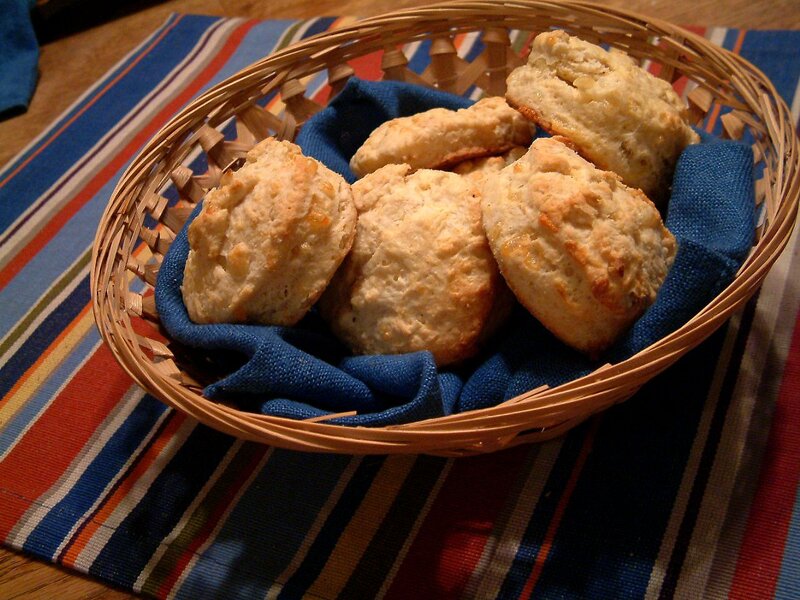By Kendra Nordin, Kitchen Report
The key to making perfect scones is to use self-rising flour. Sifting the flour will add air and ensure that the scones are light. Work quickly and lightly and handle the dough as little as possible.
2 cups self-rising flour*
1/8 teaspoon salt
1 teaspoon dry mustard
5 tablespoons butter, room temperature
1/2 cup shredded cheddar
1/2 cup dried apple chunks
1 egg
1/2 cup milk, approximately
Butter
For the dried apple
Preheat oven to 375 degrees F. Line a cookie sheet lined with parchment paper. Core, peel, and cut 1 apple into chunks and bake on the sheet for 20 minutes. Cool completely.
For the scones
1. Preheat oven to 450 degrees F. and grease a baking sheet.
2. Sift the flour into a mixing bowl. Add salt and dry mustard. Cut the butter into the bowl with a knife or pastry cutter. Using your fingertips, rub the butter into the flour until the mixture resembles fine bread crumbs. (You can also use a hand mixer to do this.) Add cheddar and apples. Make a well in the center of the mixture and drop in the egg. Adding a portion of the milk at a time, stir the egg and milk into the dough using a rounded-edge knife. How much milk you use depends on the size of the egg. The dough should incorporate all the flour, but it shouldn’t be wet and sticky.
3. Turn the dough onto a floured surface. Using your fingertips, gently smooth out any cracks in the dough. Lightly press out the dough or roll lightly with a rolling pin until about 3/4 inch thick. Cut with a 2-inch round cutter dipped in flour. Place rounds on the greased baking sheet and brush the remaining milk on top with a pastry brush. Bake 10 to 12 minutes or until golden brown.
4. After removing the scones from the oven, put them onto a cooling rack covered with a tea towel. Place another tea towel on top of the scones to trap the steam and to keep the scones from drying out as they cool. Serve warm with butter. Makes 8 scones.
*If you don’t have self-rising flour, use 1 teaspoon baking powder for every cup of flour.
Leftover scones can be frozen for several weeks. To reheat, wrap a frozen scone in a paper towel and microwave for 30 seconds. Enjoy!
Applesauce
4 apples, peeled, cored, and choped
1 tablespoon white sugar
1 tablespoon brown sugar
1 cinnamon stick
3/4 quarters cup water
Add all the ingredients to a sturdy pot, bring to a boil and then reduce to a simmer for 15 to 20 minutes until the apples are soft. Remove the cinnamon stick and mash with a potato masher. Serve warm.
Read the full post on Stir It Up!








